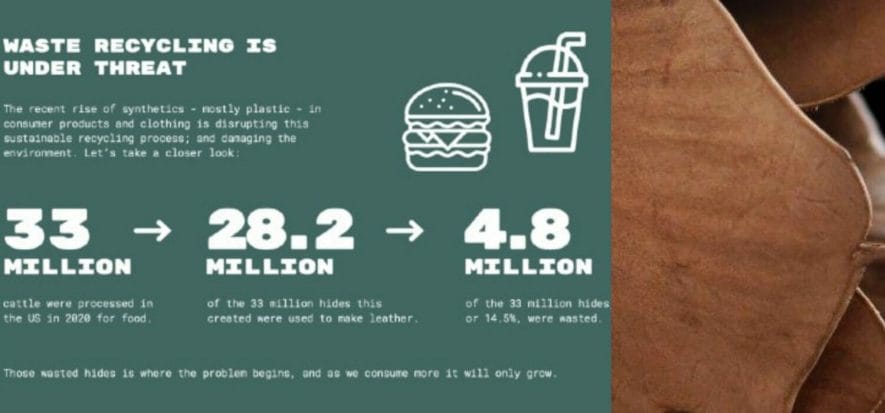There are some facts that are good to remember. The first one, for example, is this: tanning is green, because it has an upcycling function in a perfectly circular economic scheme. The second is strictly tied: due to the fact that tanning recovers a waste byproduct of the livestock chain, the potential conversion to synthetic materials by the fashion and design segments, would mean a large environmental impact increment. Many though, prefer not to see that.
Tanning is green
Franck Boehly, president of CNC (Conseil National du Cuir), was just the last to repeat this concept. Even though many say that animals are farmed for their leather, that’s not how it is. Tanning saves a byproduct of the livestock industry. “Who would ever farm an animal for 5% of its value – he said during the podcast conducted by Victoire Casto -? It would make no sense and it doesn’t happen anywhere in the world. You don’t raise animals for their hides, but to feed the population”. And here tanning comes in useful, as the only alternative to tanning the hides is the landfill. “I am not going to hald back in saying that the leather industry is an example of circular economy – adds Boehly -. We take waste and transform it into raw material for other products”.
Easy to say synthetic
It’s easy to use prefixes like “eco” and “vegan” to a material and expect the matter of environmental impact of fashion to be solved. But the matter is much more complex, as further explained by CNC, which published an infographic by LHCA, the Leather & Hide Council of America. The United States of America slaughtered 33 million units in 2020. The tanning segment was able to absorb 28.2 million hides: meaning that 4.8 million of them ended up in landfills. What would happen if fashion was to convert its entire manufacturing to synthetic materials: would the number of hides in landfills grow exponentially? It would be a disaster.
“Without the leather segment, almost 1 billion kilograms of bovine hides would be unused – commented Stephen Sothmann, president of LHCA –. Such volume would add a lot of pressure on the environment, which would be further aggravated by the switch to imitations made with vegetable byproducts, plastic or other non-renewable sources.
Read also:











